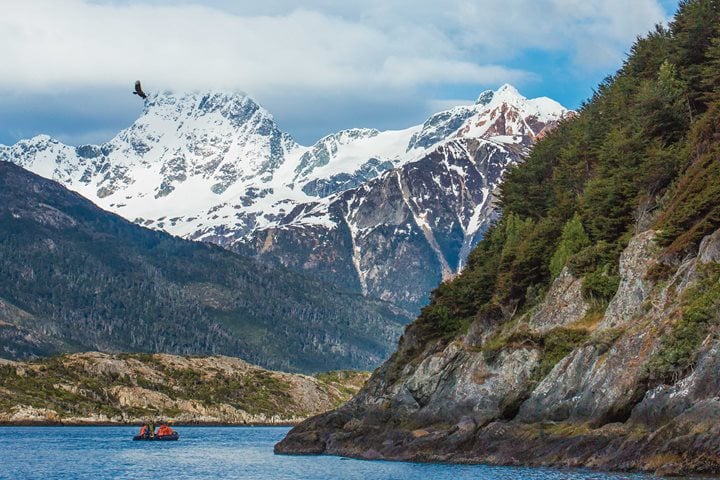As synonymous with Patagonia as the jagged peaks of Torres del Paine, guanacos can be found roaming the terrain’s wild, windswept steppes, grazing on grassy patches, and bolting across the slopes in herds of up to 50. Their name [pronounced gwuh-NAA-ko] comes from the Quechua word huanaco, meaning a wild animal or an animal that runs fast, which is perfectly fitting: adult guanacos can run up to 35 miles per hour. And that need for speed kicks in quickly—baby guanacos are walking five minutes after birth and on the run shortly after.
Get Inspired By Photos, Videos, Webinars, Stories, And Exclusive Offers.
Sign Up
On first glance it can be hard to differentiate guanacos from their other camelid cousins—llamas, alpacas, and vicuñas. These four South American species share many similar traits. But one big difference is that guanacos and vicuñas still roam the wild, while alpacas and llamas have been domesticated as pack animals for thousands of years.
Being one with the wild has given guanacos some exceptional abilities. Besides being quick-footed and surprisingly good swimmers, they’re incredibly adaptable. These hearty herbivores can thrive in a wide range of habitats—withstanding arid desert climes, sub-zero temperatures, snowfall, rain, high winds, and elevations from sea level to over 2 miles.
Surviving in environments with such low oxygen levels is no joke, but their bodies are designed for just that. Guanaco’s hearts are 15% larger than most mammals their size and a teaspoon of their blood contains 67 million red blood cells—about four times as much as humans. They can go without water too: they get all their moisture from the grasses, lichens, and succulents they scoop up with their split upper lips.
Learn more about this very adept adapter.









